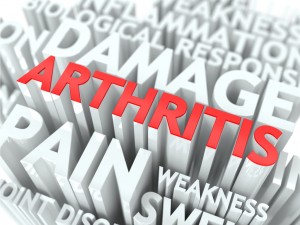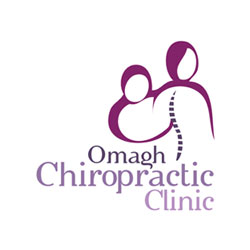Osteoarthritis and Chiropractic
What is it?
Arthritis is a complex family of musculoskeletal disorders consisting of more than 100 different diseases or conditions that destroy joints, bones, muscles, cartilage and other connective tissues, hampering or halting physical movement. Osteoarthritis (OA) is one of the oldest and most common forms of arthritis and is a chronic condition characterized by the breakdown of the joint’s cartilage. Cartilage is the part of the joint that cushions the ends of the bones and allows easy movement of joints. The breakdown of cartilage causes the bones to rub against each other, causing stiffness, pain and loss of movement in the joint.
 Its cause is still not completely known and there is no cure. In fact, many different factors may play a role in whether or not you get OA, including age, obesity, injury or overuse and genetics. Your OA could be caused by any one or by a combination of any of these factors.
Its cause is still not completely known and there is no cure. In fact, many different factors may play a role in whether or not you get OA, including age, obesity, injury or overuse and genetics. Your OA could be caused by any one or by a combination of any of these factors.
What causes it?
Common risk factors for osteoarthritis include.
- Age. Incidences of OA increase as you age. Since “wear and tear” does play a part in the development of OA, the older you are, the more you have used your joints. Although age is an important risk factor, it doesn’t mean that OA is inevitable.
- Obesity. Increased body weight is a serious factor in the development of OA, particularly in your knees, which carry the brunt of your weight day in and day out. For every pound you gain, you add four pounds of pressure on your knees and six times the pressure on your hips. Recent research suggests that excess body fat produces chemicals that travel throughout the body and cause joint damage, which would mean obesity plays a systemic, not just a mechanical, role in osteoarthritis onset.
- Injury or Overuse. Athletes and people who have jobs that require doing repetitive motion, such as landscaping, typing or machine operating, have a higher risk of developing OA due to injury and increased stress on certain joints. OA also develops in later years in joints where bones have been fractured or surgery has occurred.
- Genetics or Heredity. Genetics plays a role in the development of OA, particularly in the hands. Inherited abnormalities of the bones that affect the shape or stability of the joints can lead to OA. Just because you have one of these inherited traits, doesn’t mean that you are going to develop OA. It just means that your doctor should check you more closely and more frequently for signs and symptoms of the disease.
- Muscle Weakness. Studies of the knee muscles not only show that weakness of the muscles surrounding the knee can lead to OA, but that strengthening exercises for thigh muscles are important in reducing the risk.
What are the effects?
Most often, OA develops gradually. It may start as soreness or stiffness that seems more a nuisance than a medical concern. Pain may be moderate, intermittent and not interfere with your day-to-day existence. Some people’s OA will never progress past this early stage. Others will have their OA progress to a point where it interferes with daily activities, and the pain and stiffness make it difficult to walk, climb stairs or sleep. Rarely, a person with OA will experience sudden signs of inflammation such as redness, pain and swelling, known as inflammatory or erosive osteoarthritis.
The most common signs and symptoms of osteoarthritis are:
- Joint soreness after periods of overuse or inactivity.
- Stiffness after periods of rest that goes away quickly when activity resumes.
- Morning stiffness, which usually lasts no more than 30 minutes.
- Pain caused by the weakening of muscles surrounding the joint due to inactivity.
- Joint pain is usually less in the morning and worse in the evening after a day’s activity.
- Deterioration of coordination, posture and walking due to pain and stiffness.
- Osteoarthritis most commonly occurs in the weight-bearing joints of the hips, knees and lower back. It also affects the neck, small finger joints, the base of the thumb and the big toe. OA rarely affects other joints except when injury or stress is involved.
How can Chiropractic help?
Most arthritic conditions benefit greatly from Chiropractic care and should be considered as an adjunct to medical care, particularly osteoarthritis, which is the most common type of arthritis.
Osteoarthritis is often treated with anti-inflammatory medication and nothing else. This is a mistake. Using anti-inflammatory medication in the long term has been shown to impair the healing rate of cartilage and can also cause damage to the lining of the stomach and result in fatal stomach bleeds, particularly in the elderly. Fortunately there are better ways to manage osteoarthritis.
If you receive chiropractic care, regular, gentle exercise and improve your diet, you can reduce your need to take anti-inflammatory medication, which is great news. In fact some of our patients have been able to stop taking them all together.
With regard to the inflammatory arthritis, such as rheumatoid arthritis (RA), psoriatic arthritis and ankylosing spondylitis (AS), there is not a real cure for these conditions. Although, they have their natural peaks and troughs, the inflammatory process can be quite severe and it is therefore important to take medication to control it to avoid joint destruction. Chiropractic care is still useful as a therapy for these conditions to help you control the symptoms.




